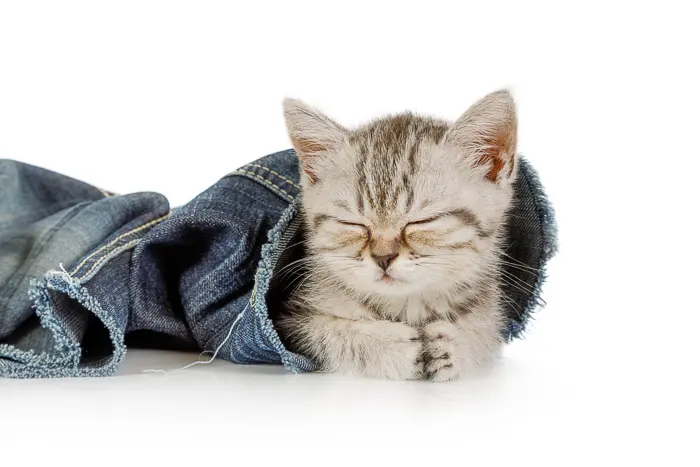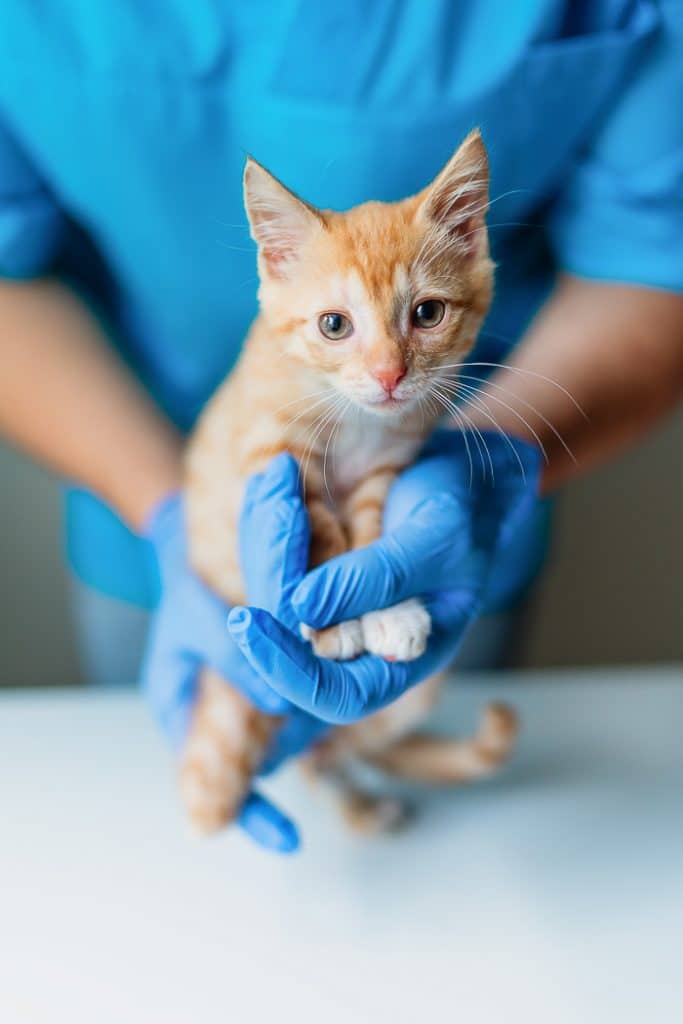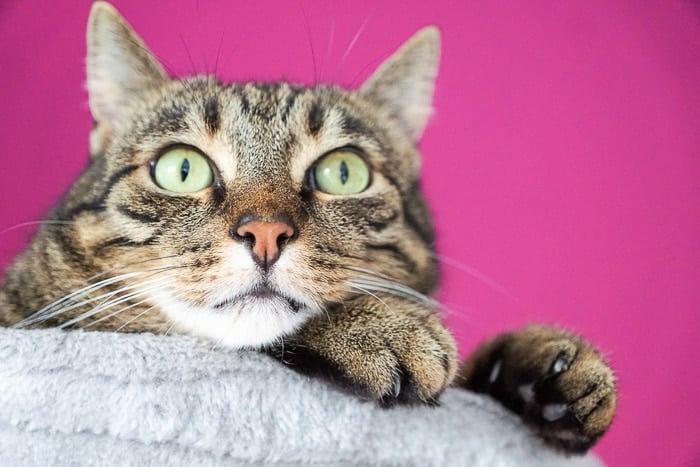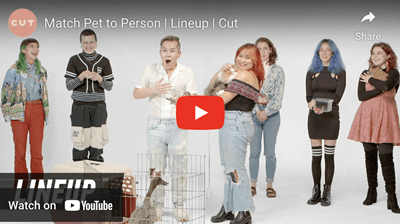All cats are special, but there is a special subset of cats that live fantastic lives, that have the condition of feline radial hypoplasia. Dr. Jess breaks down what this intriguing condition is, how to spot it, and how to care for a cat with it, below in this article.

What is a “Feline”?
A feline is just a fancy way of saying cat.
You know – meow meow.
Cats come in all shapes, sizes, colors, and personalities.
In many medical and veterinary circles – you may hear doctors and veterinary staff referring to cat and kitten issues and illnesses as “feline something-or-other this” or “feline something-or-other that“
What Does “Radial” Mean?
Radial, in this veterinary medical context, is referring to the cat's radius. The radius is one of the long bones in the “arm” or front leg of the cat.
What is “Hypoplasia”?
Hypoplasia, broken down is “hypo“, which in medical and veterinary terms means ‘low‘, ‘decreased‘, ‘not enough of‘, and “plasia“, which can be interpreted in veterinary and medical language to mean ‘development‘ or ‘formation‘.
Therefore, for us and this discussion, hypoplasia means the incomplete development, decreased development, or lack of development of a tissue in the body.
What is Feline Radial Hypoplasia?
Well, we have already discussed what all three of these terms mean.
Feline is just a fancy word for a cat.
Radial is referring to the radius, a long bone in the arm or front leg of many mammals.
Hypoplasia is the underdevelopment or lack of development of a tissue in the body.
Therefore, feline radial hypoplasia could be described as the underdevelopment or lack of development of the radius bone in a cat.
This fairly rare condition is caused by a rare mutation that is thought to be related to polydactylism in cats, where cats are observed having more than the normal amount of toes per paw.
It is often referred to as Radial Hypoplasia or “RH”, for short.
Cats with radial hypoplasia will often be seen with shorter than normal front limbs, often twisted and not straight like a normal front limb would allow.
Many times, these intriguing cats will sit on their backend or rump with their front legs up, unable to reach the ground, somewhat like the calm stance of a squirrel.
A similar condition affecting the hind legs is called femoral hypoplasia and has only been reported a very few times in cats, something I have never even seen.
These few cases are described by M Isola, E Baron & A Zotti in the Journal of Small Animal Practice, Volume 46, Issue 12, Page 597 (December 2005).
What is Feline Femoral Hypoplasia?
Femoral Hypoplasia is basically the same thing a radial hypoplasia, but it occurs in the back legs or leg of the cat.
Femoral Hypoplasia is the underdevelopment of the femur bone and Tibial/Femoral Hypoplasia is the underdevelopment of both femur and tibia bones in the cat.
The femur and tibia are two of the long bones in the back leg of the cat.
So these few cats with Femoral Hypoplasia or Femorotibial Hypoplasia would be observed having very short back legs compared to their normal-length front limbs.

What is a Squitten?
Cats with Feline Radial Hypoplasia are sometimes referred to as ‘Squitten Cats' or ‘Twisty Cats'.
A squitten is a cat with a genetic mutation that causes a deformity of the radius bone making the friendly feline resemble a squirrel, hence the name, ‘squirrel-kitten' = Squitten.
The term ‘Squitten‘ or ‘Twisty Cats‘ is commonly used to refer to cats with a few similar-looking conditions.
These conditions include radial hypoplasia, that we have been discussing in this article, cats with underdeveloped radius bones, along with other conditions such as Foreleg Micromelia (small forelegs), Radial Aplasia (absence of a radius bone), Radial Agenesis (failure of radial bones to form), all of which can produce stunted forelegs.
In most cases, the cat will have normal-length hind legs.
Can Cats with Radial Hypoplasia Use Their Legs?
Most cats with RH cat still use their front legs, just a little different than most other cats – they can walk, run, crawl, scratch, even climb!
Cats with Radial Hypoplasia will adapt to their condition – they won't know any different!
Many RH felines usually learn to walk, sometimes on their elbows out of necessity, with a gait that is lower to the ground and crouched, with a rocking and crabwalk swagger.
RH kitties will play and exercise and live their normal lives even if they look a bit different.
Does RH Hurt?
The condition itself should not be painful for the cat, but conditions arising from the condition could potentially cause the cat some pain depending on individual circumstances, some of which are discussed further down in this article.
Contact your veterinarian if you are concerned that your cat is in pain.
Is this Congenital or Hereditary?
This condition is genetically passed in the genes of the cat, therefore it is considered hereditary, a trait the cat was born with.

Feline Radial Hypoplasia Treatments:
Cats with radial hypoplasia can be treated symptomatically.
This means that if an issue that is related to their RH, such as an abrasion from carpet, arises, the symptoms of that issue can be dealt with.
Your local veterinarian may treat the abrasion or wound with a medicated dressing or ointment or maybe even some antibiotics depending on the situation.
RH kitties can also undergo surgery to help with the deformity under some circumstances. [1]
Your veterinarian, along with your veterinary orthopedic surgeon can determine if your feline friend is a good candidate for surgery.
Can RH be Cured?
Feline radial hypoplasia can not be cured, but can be treated, with a healthy, happy cat as an end result.
Even with surgical intervention, the RH kitty will have some amount of limp, limb deformity, and other abnormal gait features.
Tips on Helping a Cat With Radial Hypoplasia:
Consult your veterinarian:
As a veterinarian, my first tip has got to be for anyone who is going to care for a kitty with RH to consult with their local veterinarian.
Not only consult with your favorite general practice vet, but also seek counsel from an orthopedic veterinary surgeon – hopefully your local vet can recommend one.
Having both of these professional well-versed with your pet will go so far if your pet ever falls ill because of their radial hypoplasia.
Your general veterinary practitioner as well as your veterinary orthopedist can keep records of the kitties issues and any new attributes that may arise due to the RH can be monitored closely for detrimental progression of disease associated with RH.
Keep RH kitties indoors:
Radial Hypoplasia cats can’t be outdoor cats or even indoor-outdoor cats, UNLESS they go out in the company of a human and with close supervision in a FENCED-IN yard.
They have a harder time running fast, being agile, and climbing up things when compared to cat with normal-length limbs- all of these being ways cats can protect themselves from predators while outside.
Watch their limbs for ‘wear and tear':
Watch their legs carefully for any signs of sores, cuts, rubs, or abrasions.
If this occurs, a protective covering, approved by your veterinarian, can be placed on the affected area.
These bandages or coverings will need to be checked and monitored often for fit and proper function and only applied with a veterinarian's approval.
Although your cat's skin can toughen up as the kitten becomes an adult cat, it is best to perform daily inspections of all of your kitties limbs to be certain that you know exactly what is going on at all times.
Climbing and ramps:
If you live in a home with multiple levels that your RH kitty has access to, try to prevent this access, especially to stairs, with barriers that your cat cannot get through.
Many times this may mean that the furnishings and furniture in the home may need to be moved or reorganized in a way to limit your kitties access to other areas.
If your cat likes to climb and get itself into high or tight spaces, try to limit their access to these spots as it may be harder for them to get themselves down or out of these places and you may not always be right there to assist them if they find themselves in this type of situation.
If you are home and see them in a higher than what is safe, gently lift them away from the area.
Some owners will invest in or make ramps with soft carpeting on them to help their RH kitty move around more easily when they feel an urge to climb.
Litter boxes:
A large litter box and one that has low sides, is helpful for RH cats.
It is also a great idea to provide traction, like rugs or carpeting around the outside walking areas surrounding the box, to help the RH cat getting into the litter box safely and easily.
On top of all of this, I highly recommend a second litter box available – for any indoor cat – but especially for an RH cat.
Summary:
Feline Radial Hypoplasia is a condition in cats where there is an underdevelopment of the radius observed in the front limb or limbs.
RH cats can do all the things a normal cat can and most do not have any increased medical worries.
There are symptomatic treatments and surgical corrections available to RH cats who would be good candidates.
Radial hypoplasia kitties should do regular vet check ups and also have a veterinary orthopedic surgeon as part of their medical team.
Article References:

![[Vet Explains Pets]](https://vetexplainspets.com/wp-content/uploads/2024/09/cropped-vetlogo-199x66.png)
